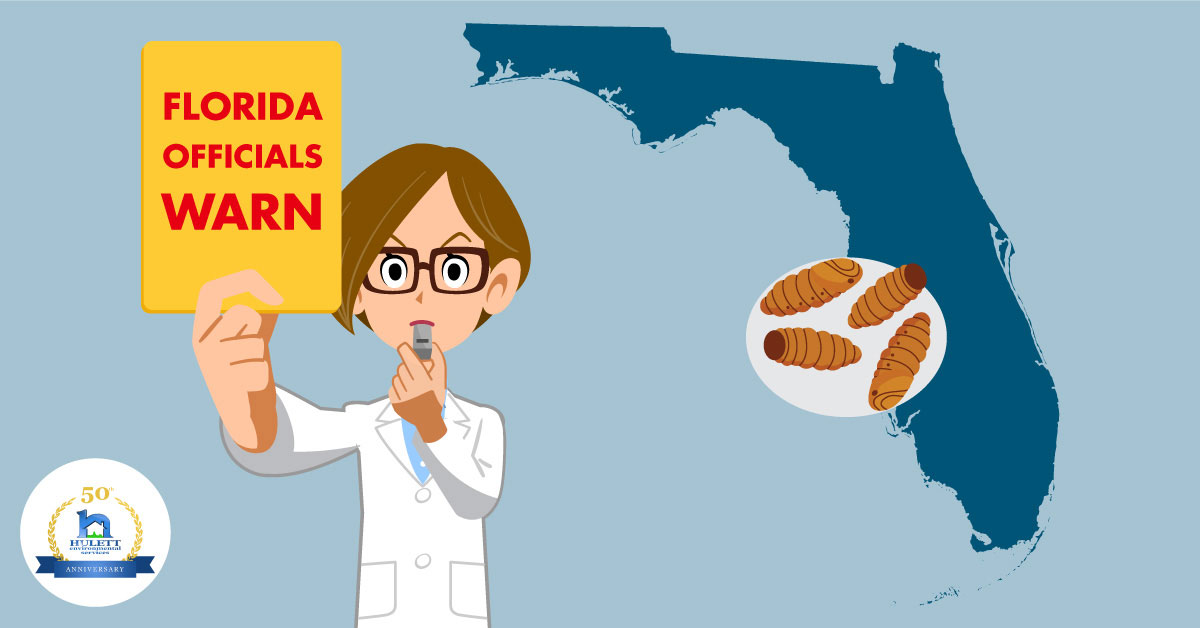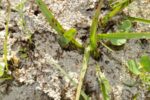
Venomous Puss Caterpillar Returns, Florida Officials Warn
Twice yearly, South Florida residents bear witness to puss caterpillar season, as do people in New Jersey, Pennsylvania, the southeast and Texas. The larval form of the southern flannel moth has been spotted in the Tampa Bay area; this has prompted Florida officials to send out a warning about these furry little menaces. University of Florida’s (UF) Entomology Department database recognizes puss caterpillars as one of the most venomous species of moths in the US. One source said that the sting from a puss caterpillar can be debilitating and “even make your bones hurt.”
Couldn’t just go with “cat-erpillar” or kitty caterpillar?
Scientists conjecture that puss caterpillars get their name from their resemblance to tiny Persian cats. Indeed, these inch-long larvae sport thick and abundant long bristles that look like fur. The UF database describes puss caterpillars as varying in color from “downy grayish white to golden brown to dark charcoal gray.” Some flaunt a horizontal streak of bright orange. In early-stage larvae, the “fur” can be quite curly, producing a puffed up, cottony look, tapering to a longish tail. As puss caterpillars evolve, the middle instars look more disheveled, like they’re having a bad hair day and no distinctive tail – just venomous spines. The Trouble with Tribbles Remember the Star Trek episode, where furry, little purring creatures, called tribbles invaded the Enterprise and wreaked havoc on the status quo? Like the crew of the Enterprise, puss caterpillars, also known as “Toxic Toupees” can throw the unsuspecting and curious into a world of hurt. Seems that underneath these caterpillars’ adorable fur are venomous spines that stab the skin of all who venture too near. “A puss caterpillar sting feels like a bee sting, only worse,” UF entomologist, Don Hall said. “The pain immediately and rapidly gets worse after being stung,” he further elaborated. Some victims say the puss caterpillar’s sting feels like a broken bone or blunt force trauma.
Reactions may be localized to the affected area but often more severe
While the pain might just irritate the skin in the affected area, often reactions can be more severe. Pain radiating up a limb is not uncommon, causing burning and swelling sensations, along with nausea, abdominal distress, and headache. Some victims experience rashes, blisters and some even report chest pain, numbness, and/or difficulty breathing. UF sources say that sweating from the welts or developing hives at the sting site isn’t unusual. It gets worse So, you’re already in writhing pain from a puss caterpillar’s venomous spines embedded in your skin. The next thing that needs to happen, preferably sooner than later involves placing tape over the offending spines and ripping them out of your skin. You will want to consult medical attention or at least the help of a loved one or friend for this activity. After removing the spines, some victims have applied ice packs, taken oral antihistamines, covered the area in a baking soda paste, hydrocortisone cream, or “the juice from the stems of comfrey plants and calamine lotion,” to varying degrees of success. Allergy and asthma sufferers may require medical attention For most victims, a trip to the emergency room probably isn’t necessary, due to a hapless encounter with a puss caterpillar. However, the Florida Poison Information Center notes that if you are affected by seasonal allergies, specifically hay fever, are prone to asthmatic issues or develop an allergic reaction, “contact a physician immediately.” Alfred Aleguas, director of the Florida Poison Control center said that stinging victims can also contact the center to, “tell you things to do to relieve a lot of the pain.” Puss caterpillar populations vary in size from season to season While not particularly prolific, some years are better than others as populations can rise and fall dramatically, depending on the weather, food availability and the number of parasites in a given season. A 2014 National Geographic article reported, “Young children from Florida to North Carolina are reporting excruciating pain after coming into contact with” puss caterpillars. The article goes on to note that some children had been injured when they petted these caterpillars or when the caterpillars fell on them from trees. Earlier this summer, a Florida teen, was stung 20 times while landscaping at his family’s home, Weather.com reported. The teen was hospitalized for a severe reaction to the stings. Natural predators Because puss caterpillars are all about defense, their natural predators are mostly clever, parasitoid flies who lay eggs so small that puss caterpillars eat them. Tachinid flies, a large group of true flies are considered beneficial insects, in that the larvae stage feed on host insects, eventually kill hosts, such as puss caterpillars. Just call Hulett Watch out for DIY (Do-it-Yourself) pest control products, they can kill puss caterpillars’ natural predators and actually increase the puss caterpillar populations, Hulett suggests contacting a professional pest control company to address your puss caterpillar concerns.



